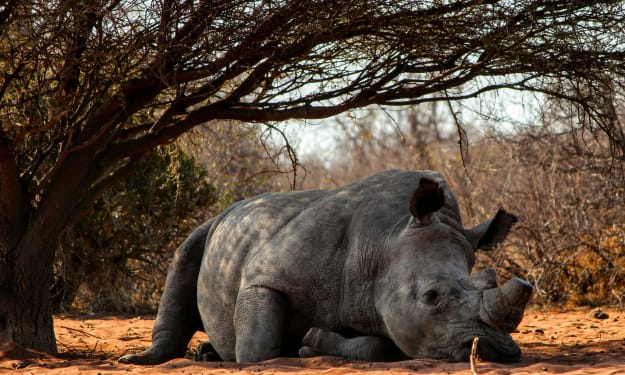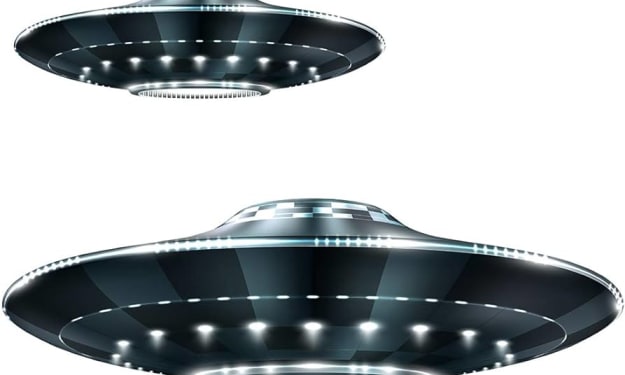Things That Would Happen If DINOSAURS Still Existed
Imagining a World Where Prehistoric Giants Roam the Earth

The idea of dinosaurs still roaming the Earth is a fascinating and thrilling concept that has captured the imagination of people for generations. From blockbuster movies to vivid books and detailed documentaries, envisioning a world where these ancient giants cohabit with humans raises a multitude of intriguing possibilities and questions. What would our world look like if dinosaurs still existed? How would ecosystems, human societies, and daily life be affected? Let’s explore some of the profound changes and challenges that might arise if these prehistoric creatures were still part of our natural environment.
Ecological Impact and Biodiversity
If dinosaurs still existed, the ecological impact would be immense. Dinosaurs, ranging from the massive herbivorous sauropods to the ferocious carnivorous theropods, would occupy a significant portion of the food chain. The presence of such large animals would drastically alter current ecosystems.
Forests and grasslands would need to support these massive creatures, which could lead to changes in vegetation patterns. For instance, the constant grazing by herbivorous dinosaurs would influence plant growth and the structure of forests. Predatory dinosaurs would also play a crucial role in controlling the population of herbivores, maintaining a balance within the ecosystem.
Biodiversity might see a tremendous increase with the presence of dinosaurs. New symbiotic relationships could develop between dinosaurs and smaller animals, insects, and plants. This could lead to the evolution of new species and the resurgence of plants and animals that have adapted to live alongside these giants.
Human Settlements and Urban Planning
The existence of dinosaurs would necessitate drastic changes in human settlements and urban planning. Cities and towns would need to be fortified against potential dinosaur intrusions. Building materials and architectural designs would evolve to provide safety from the immense strength and size of these creatures.
Fencing and barriers would need to be much more robust, perhaps electrified or constructed with materials that could withstand a dinosaur’s force. Urban planners would need to consider the migratory patterns of these animals, designing cities in locations less likely to be frequented by large dinosaurs.
Transport systems might also be affected. Roads and railways would need to be protected from potential dinosaur crossings, possibly through elevated tracks or tunnels. Airports and flight paths would need to account for the possibility of flying reptiles, such as pterosaurs, which might share the skies.
Agriculture and Food Supply
Agriculture would face significant challenges with the presence of dinosaurs. Farmlands would need protection from herbivorous dinosaurs that could easily devastate crops. Innovative solutions, such as high fences, deterrent technologies, or even genetically modified plants that are less appealing to dinosaurs, might become necessary.
On the other hand, dinosaurs could be integrated into agricultural systems in beneficial ways. For instance, some herbivorous dinosaurs might be used for clearing large tracts of land quickly. Their manure could also serve as a rich source of fertilizer, enhancing soil fertility.
The meat industry might see a drastic change as well. Certain dinosaur species could potentially be domesticated for their meat, providing a new source of protein for humans. This would lead to new farming practices and dietary habits.
Tourism and Entertainment
The tourism industry would likely boom with the existence of dinosaurs. Dinosaur safaris, parks, and reserves would attract millions of visitors eager to see these magnificent creatures up close. Such attractions would need to ensure the safety of both the dinosaurs and the visitors, requiring advanced technology and strict regulations.
Entertainment mediums, such as films, documentaries, and virtual reality experiences, would evolve to include real footage and interactions with living dinosaurs. This could lead to a renaissance in the way we perceive and interact with media, providing more immersive and educational experiences.
Scientific Research and Advancements
The presence of living dinosaurs would revolutionize scientific research. Paleontologists and biologists would have the unprecedented opportunity to study dinosaur behavior, physiology, and ecology firsthand. This could lead to groundbreaking discoveries about their biology, evolution, and the environments they thrived in.
Genetic research would also take a huge leap forward. Understanding the DNA of living dinosaurs could provide insights into genetic engineering, disease resistance, and evolutionary biology. It could also help in efforts to conserve endangered species by applying lessons learned from these ancient creatures.
Cultural and Societal Changes
The existence of dinosaurs would undoubtedly influence human culture and society. They would become integral to our folklore, myths, and daily narratives, much like how lions and eagles feature prominently in various cultures today. Dinosaurs might be revered, feared, or even worshipped in some societies, shaping religious and cultural practices.
Societal norms and laws would adapt to this new reality. Governments would establish regulations to protect both humans and dinosaurs, balancing conservation efforts with public safety. Ethical debates would arise regarding the treatment and rights of dinosaurs, especially if any species showed signs of higher intelligence or social structures.
Challenges and Conflicts
Living alongside dinosaurs would not be without significant challenges and conflicts. Human-dinosaur encounters could be dangerous, leading to potential injuries or fatalities. Emergency services and wildlife management agencies would need specialized training and equipment to handle such incidents.
There would also be conflicts over land use. As human populations grow, the need for space could lead to habitat encroachment, causing tension between human settlements and dinosaur territories. Conservation efforts would need to ensure that dinosaurs have sufficient habitats to thrive without coming into constant conflict with human activities.
If dinosaurs still existed, our world would be fundamentally transformed in countless ways. From ecological changes and new agricultural practices to innovations in urban planning and scientific research, the presence of these ancient giants would leave an indelible mark on our planet. While there would be significant challenges and potential dangers, the opportunity to coexist with dinosaurs would also bring about remarkable advancements and cultural enrichment.
Imagining such a world helps us appreciate the delicate balance of our current ecosystems and the profound impact that the presence of another dominant group of creatures could have. It also underscores the importance of biodiversity and the complex interplay between all living beings on Earth. Whether viewed as a thrilling possibility or a cautionary tale, the idea of living with dinosaurs invites us to ponder the wonders and mysteries of our natural world.
About the Creator
Ibok Gerard
Ibok Gerard is a wordsmith, dreamer, and adventurer. His writing explores the intersection of mystery and reality
Enjoyed the story? Support the Creator.
Subscribe for free to receive all their stories in your feed. You could also pledge your support or give them a one-off tip, letting them know you appreciate their work.






Comments
There are no comments for this story
Be the first to respond and start the conversation.